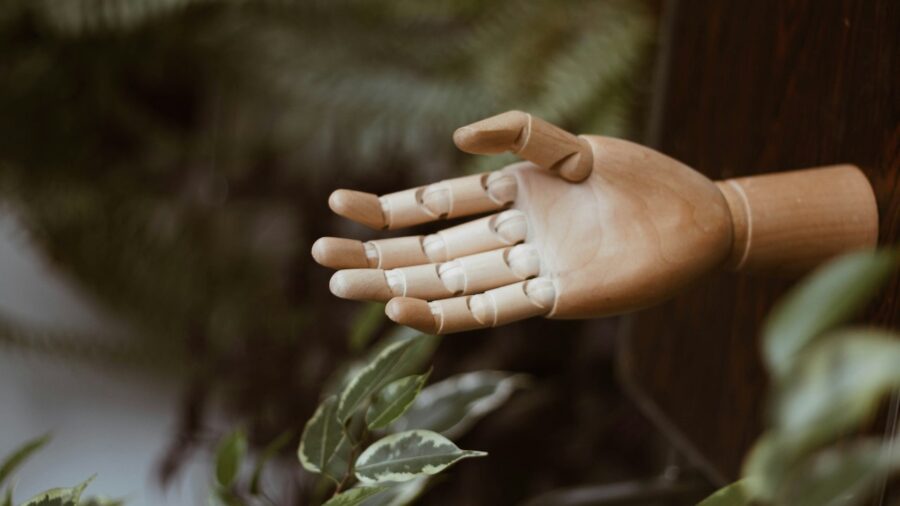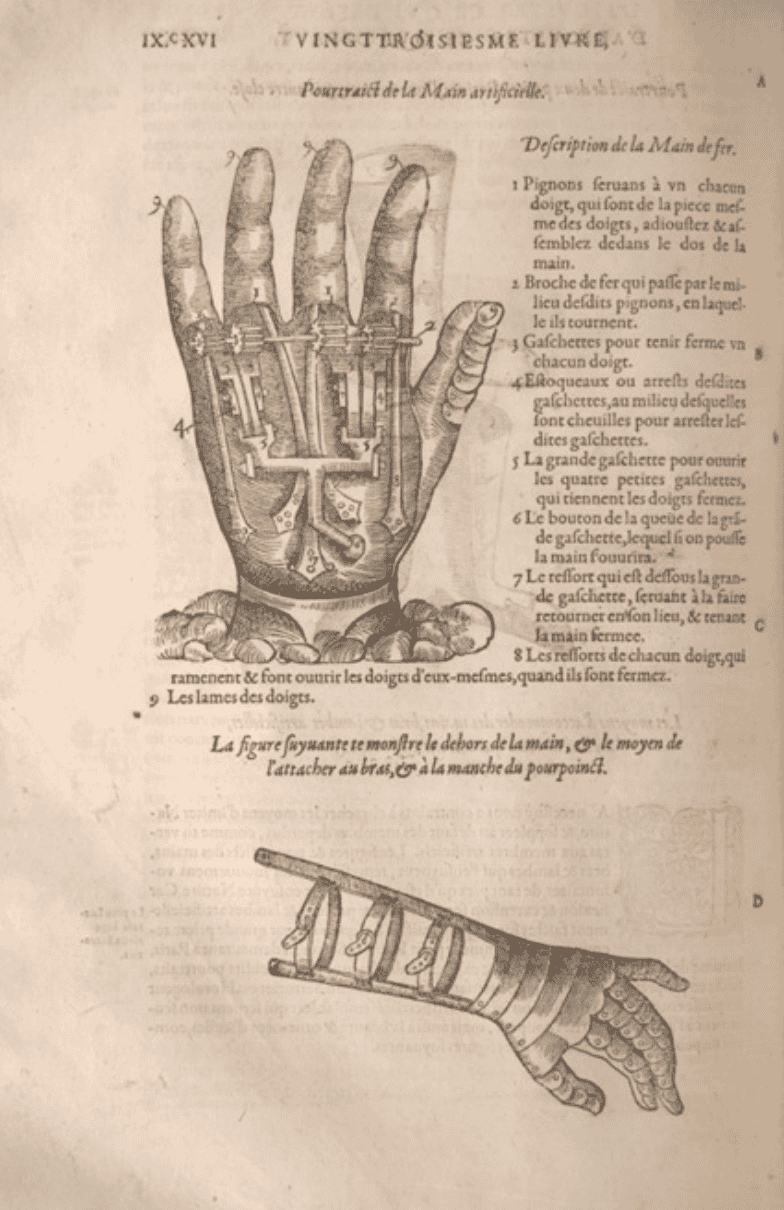See The Sixteenth Century Prosthetic Hand That You Could Wear Into Battle

How often has someone you know watched Army of Darkness and scoffed at the idea of Ash (Bruce Campbell) crafting his own prosthetic hand using only crude, olde-timey materials? It’s a stretch to be sure, but perhaps not as much of a stretch as many initially think.
Apparently, in the 1500s, a surgeon named Ambrose Paré crafted a prosthetic hand that worked well enough that a soldier wore one into battle. He called it the Le Petit Lorrain.
Check out the prosthetic hand drawing for yourself and think about how this bad boy would hold up around the middle ages.

Paré’s device operated by a series of internal cogs, levers, and springs that roughly replicated the bones, joints, and movements of the human hand.
In 1551, with the help of some colleagues, Paré created a prosthetic hand prototype that was eventually worn into battle by a captain in the French army. Using this prosthetic, the officer claimed to be able to grip and release the reigns on his horse.
To form and fashion this prosthetic hand, Paré worked with locksmiths, clockmakers, blacksmiths, and gunsmiths to ensure its function. It’s considered one of the very first documented and successful attempts at creating functional prosthetic limbs.
One can see from the prosthetic hand drawing above the level of detail, accuracy, and care that went into making something like this work. And to do so at a time when technology was, well, non-existent by current comparison, it makes the feat even more astounding.
Beyond this one prosthetic hand achievement, Paré had a long, distinguished career, one that saw him serve as a battlefield practitioner, as well as the private surgeon to four consecutive kings.
He pioneered the technique of tying off blood vessels after amputations rather than burning the living crap out of them with hot irons. That was probably appreciated, as much as anyone who just had a limb hacked off can appreciate anything.
Observing the way people responded to amputations seems to be one of the driving forces in Paré’s professional career. Seeing soldiers kill themselves rather than live without limbs inspired him to develop new and better prosthetics.
As you can see from the prosthetic hand above, his designs strived for functionality, not simple aesthetics, aiming for practical application. For instance, his legs had knees that could lock and bend, and he considered an arm that used a pulley system to replicate natural movements. Most of these endeavors were undertaken on his own, as there was little outside backing for his work.












